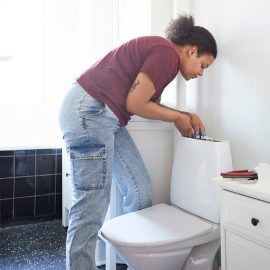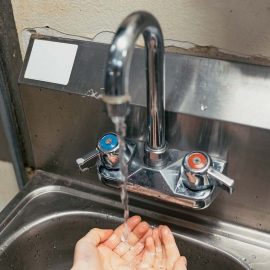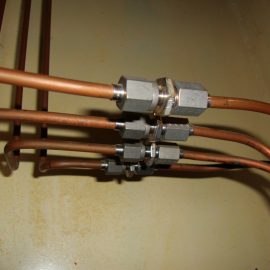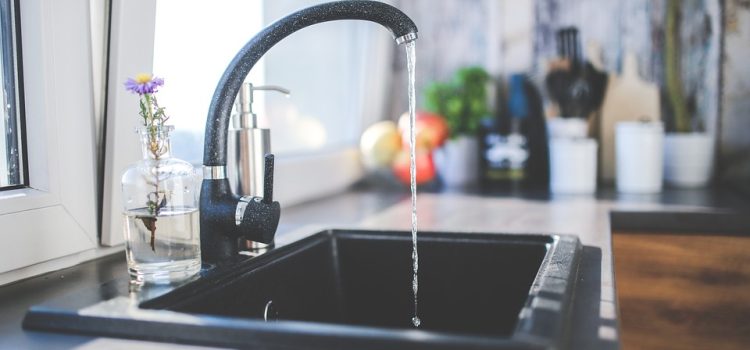
Are you tired of that mixer tap that no longer works properly or deteriorates a few times after its purchase? Need some tips to guide you in purchasing a new mixing valve? Read this article!
Choose the Size of the Faucet According to the Basin or the Sink
Depending on the installation method and the height of the basin or sink, you will choose the right faucet.
Free-standing Basin or Washbasin
When buying a faucet, take into account the height of the faucet so that you can easily reach underneath. To give you an idea, here are some guidelines:
- A 75 to 130 mm high faucet with a 110 to 130 mm long spout for a free-standing basin with a tap shelf.
- A 190 to 215 mm high faucet with a 100 to 135 mm long spout for a standard size basin.
- A 215 to 320 mm high faucet with a 135 to 200 mm long spout for a large countertop basin.
Recessed Basin or Washbasin
Smaller faucets are suitable for concealed basins and sinks.
- For a narrow inset basin: a 35 to 65 mm high faucet with a 70 to 110 mm long spout.
- For a standard size concealed basin: a 35 to 65 mm high faucet with a 90 to 110 mm long spout.
- For a large built-in basin: a 130 to 160 mm high faucet with a 130 to 150 mm long spout.
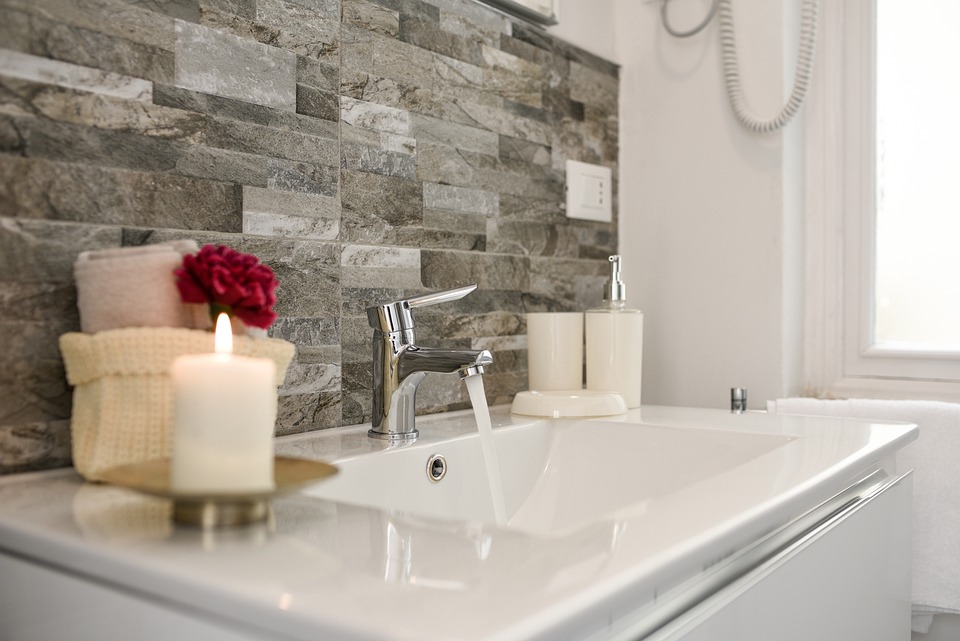
Opt For a Mixer or a Faucet
There are two types of faucets on the market: mixers and faucets. The practicality and aesthetics of the faucet are determining factors when making a purchase. Stainless steel, copper, bronze, aluminum, or ceramic, the choice of material for your faucet is entirely up to you.
Mixer taps
This is the classic model for the basin and the sink. It has two handles (one for cold water and one for hot water) and a spout. Because of its “all-purpose” design, the mixing faucet can perfectly match any basin or sink type. However, it can waste water. You have to play with the flow rate of the two levers by feeling around to get the proper water temperature. It is necessary to run a little water at each temperature test.
Mixing Faucets
The mixing valve is modern, practical, and easy to use with a single lever. This lever allows you to control the water flow (vertically) and the water temperature (horizontally) simultaneously. All mixers are equipped with a cartridge containing two ceramic discs. These are used to control the flow of cold and hot water. Depending on your needs, you can choose a simple model equipped with a notch or an anti-scald ring.
Changing your Faucet
Replacing a damaged faucet is not a complex job. All you need is some plumbing knowledge and the right tools. For example, you’ll need several rags and towels, a bowl or bucket, a wrench, a set of combination or pipe wrenches, and a pair of pliers. Before starting the work, you must first turn off the hot and cold water supply. Turning off the shut-off valves is sufficient if your sink has them.
Once the water is turned off, you can begin to unscrew the hoses that connect the old faucet to the water supply. This is where you need the bowl or bucket to catch the water left in the pipes. After unscrewing the water inlets, carefully remove the fixing ring that holds the faucet to the sink with a pipe wrench.
Before installing the new faucet, clean the area around the old one to remove any limescale. When installing the new fixture, be sure to tighten the seals. Replace the clamping ring to secure the faucet to the sink, then screw the hoses to the water inlets. Finally, open the water pipe and check for leaks.


